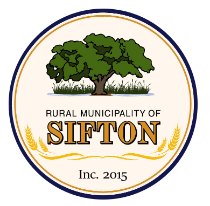A Brief History
Oak Lake Community History
Early Inhabitants & Settlement
Settled by Métis and Catholic pioneers in the early 1870s, Oak Lake’s first religious structures—built under Father Bernier and Joseph Gamache—served a largely Métis congregation. In 1887, Father Joseph Athanase became the first resident priest, leading to the establishment of St. Athanasius Church shortly thereafter
By 1875, several Dakota families from the Oak River Reserve farmed the fertile lands nearby, cultivating root crops along Pipestone Creek and the Assiniboine River valley. Though hampered by limited resources at first, agriculture grew as a sustainable livelihood by the late 1880s
Railway Arrival & Naming
With the arrival of the Canadian Pacific Railway in 1881–82, a siding and station were built near the current townsite. Oak trees in the vicinity—valued by travelers for wagon repairs—led to the name Oak Lake. The local post office officially opened in 1882, cementing the community’s new identity
Town Incorporation & Growth
Oak Lake was incorporated as a town on July 15, 1907. Population fluctuated between around 350 and 500 residents through much of the 20th century. Key civic landmarks included the Assiniboine School and community churches—all of which served as anchors for local life through the mid‑1900s
Recent Changes & Preservation
On January 1, 2015, Oak Lake amalgamated with the Rural Municipality of Sifton due to provincial municipal reorganization. It transitioned from an incorporated town to an unincorporated urban community within the RM of Sifton
The Oak Lake & District Museum, established in 2001 within the former St. Athanasius and St. David’s churches, preserves community heritage and serves as a focal point for local history
⚙ Key Highlights at a Glance
| Period | Milestone |
|---|---|
| 1870s | Métis and early settlers arrive; initial community church built |
| 1881–82 | Railway siding built; named Oak Lake; post office established |
| 1907 | Town of Oak Lake officially incorporated |
| 1910s–1980s | Steady population, schools, churches, and village life |
| 2001 | Oak Lake Museum opens |
| 2015 | Amalgamation into Rural Municipality of Sifton |
✨ Why It Matters
-
Cultural roots: Deep ties to Métis and Dakota farming traditions, alongside early Catholic communities.
-
Transport heritage: Railways shaped growth and encouraged travelers to use local oak for repairs.
-
Community continuity: Museums, churches, schools, and historic sites have preserved Oak Lake’s identity across generations.
**Excerpts and acknowledgements-Wikipedia**
